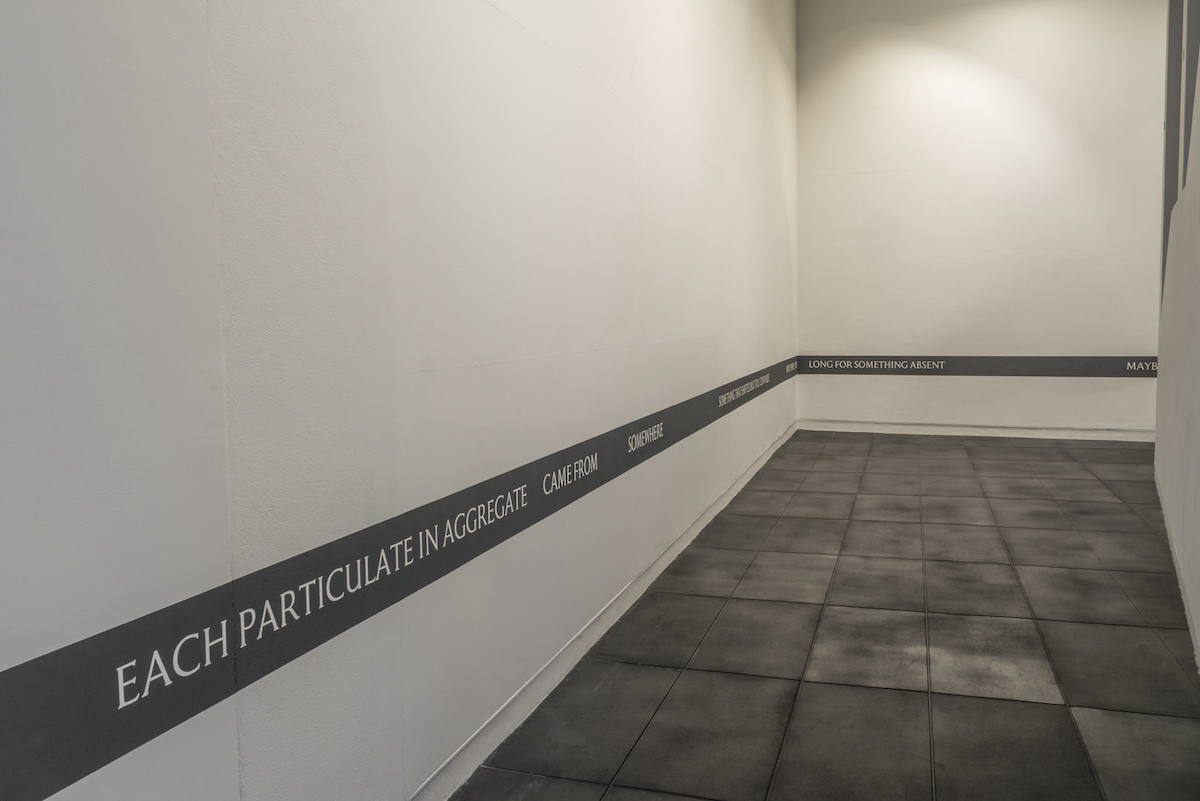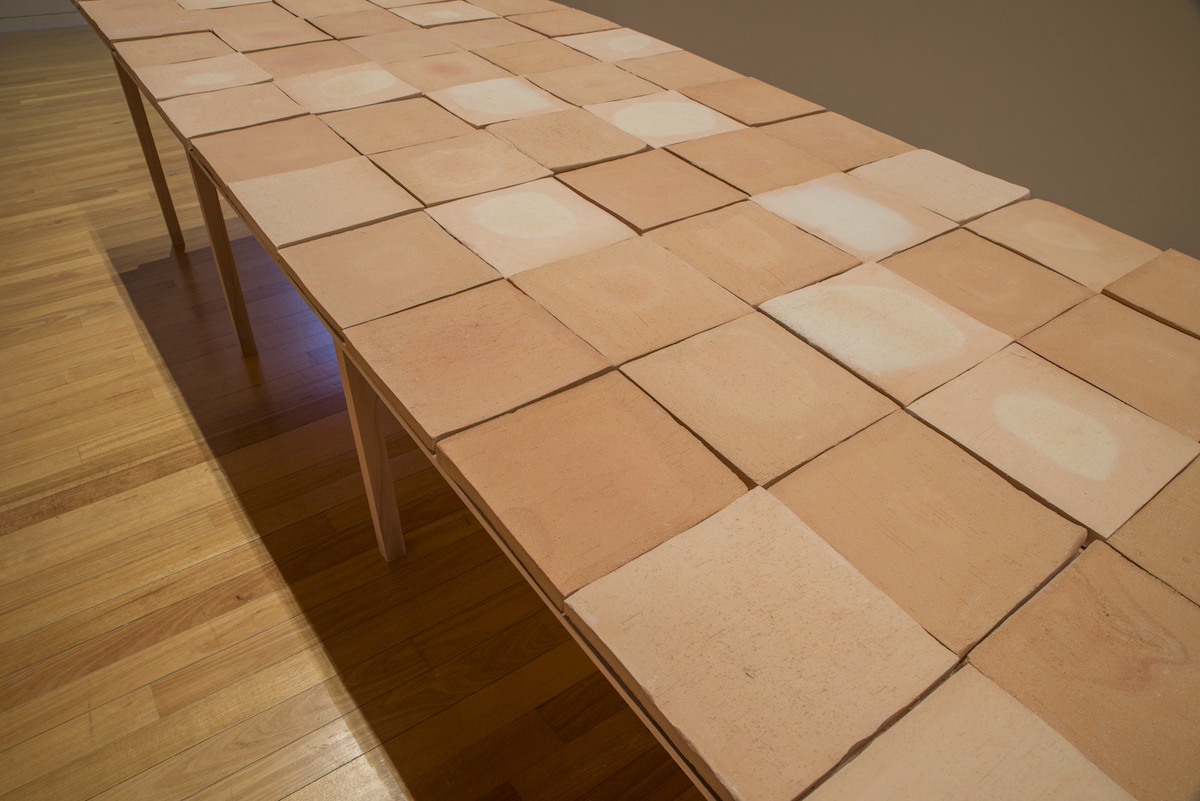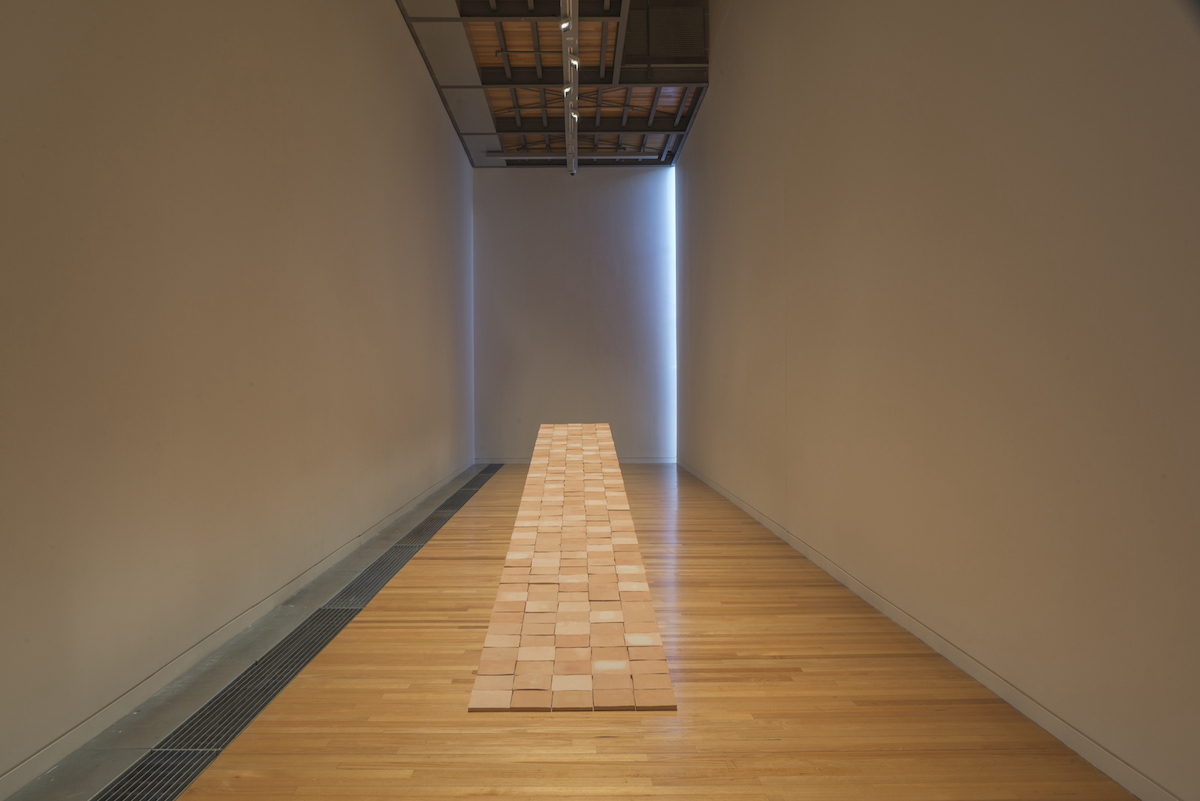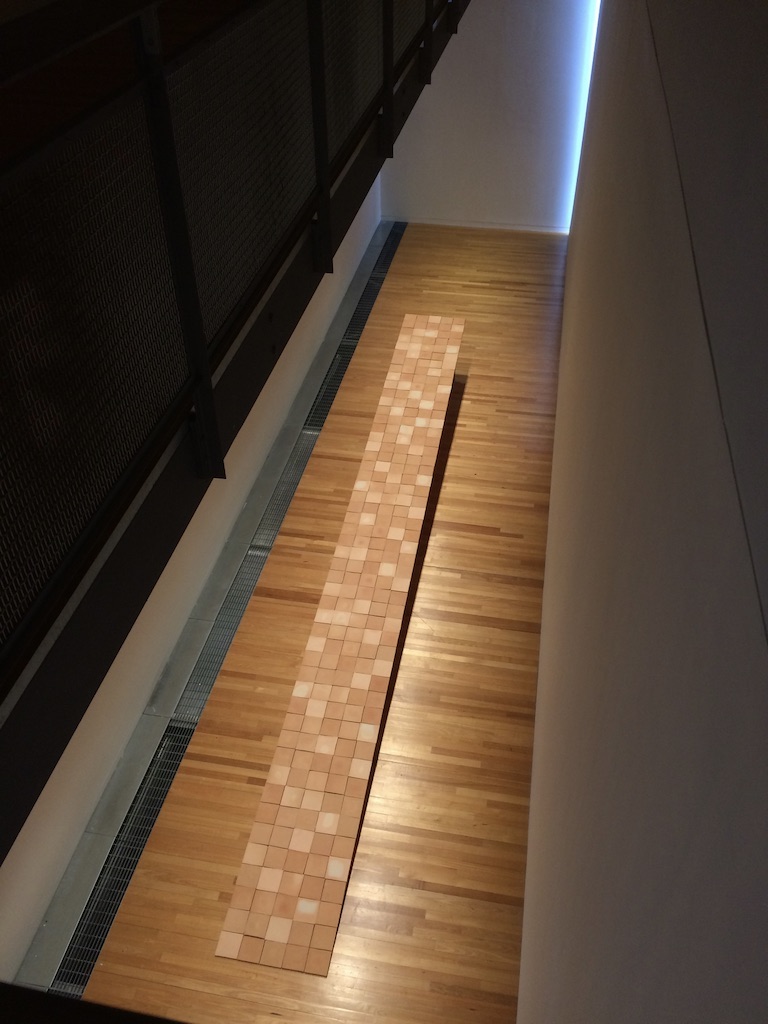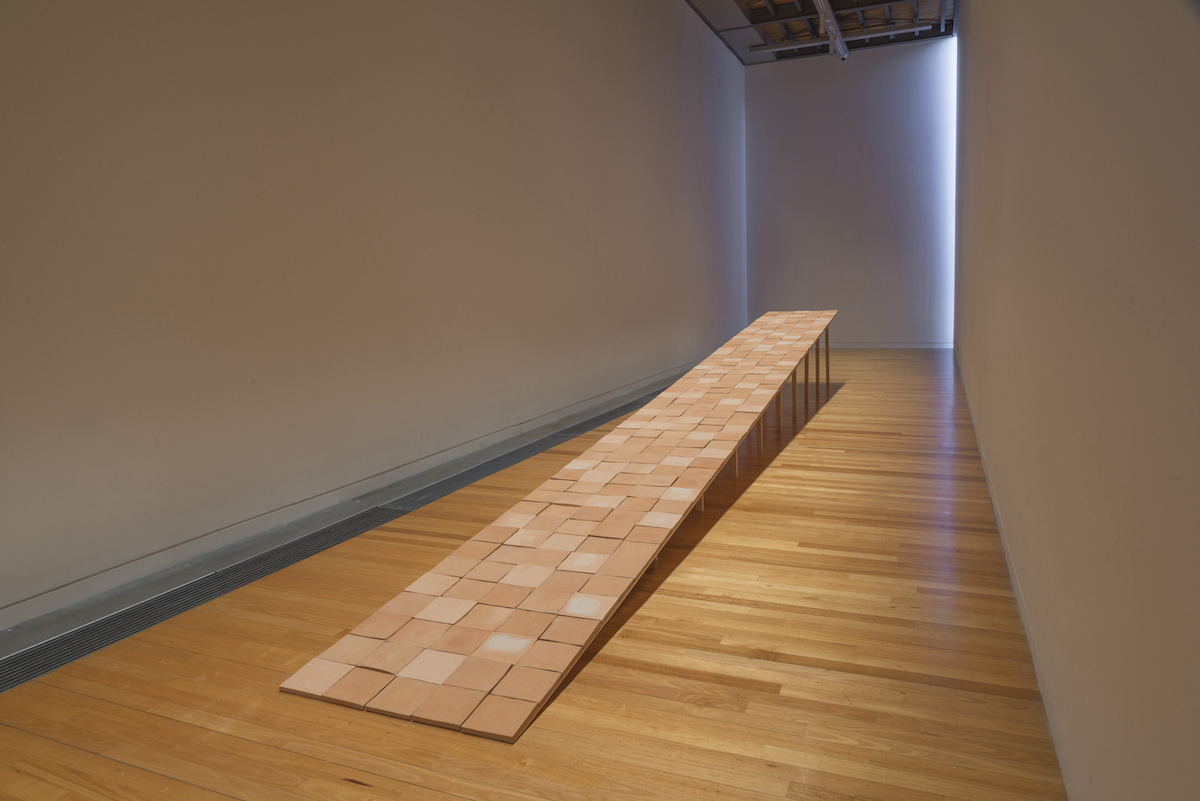
ONLY FOOLS ARE LONELY
Exhibited in
The earth looks upon us /Ko Papatūānuku te matua o te tangata, Adam Art Gallery Te Pātaka Toi, Te Whanganui-a-tara Wellington, curated by Christina Barton
Flying back to Waiharakeke I look down at the Wairau bar: the beginning of the Rangitāne o Wairau rohe, the place where the Wairau river meets the sea, the site of the earliest human artefacts found in Aotearoa. I realise I have never been.
—Ana Iti
Responding to the architecture of the Adam Art Gallery, Ana Iti has constructed a timber ramp that lifts gradually from floor level to roughly waist height, the surface of which she has covered with hand cut and fired clay tiles. This structure is not to be walked on, though the shape, scale and trajectory imply that possibility. Rather, the installation is to be viewed from above, looked at up close and circumnavigated. Clay is fine, soft, compacted earth, a particular mix of minerals and organic material. In geological terms, it is the product of sedimentary forces that act on base matter by processes of weathering and erosion over aeons. Humans have taken advantage of its malleable capacities and learnt that, when exposed to heat, clay hardens into permanent forms with myriad practical uses. Māori had lost the art of pottery by the time they arrived in Aotearoa, so for Iti, this is a recovered technique, but one that reconnects her to something primal: the earth, the medium of Papatūānuku, her ground. But the clay she has fired is not exclusively from one location or even from this country, it is a blend from several locations, an impure medium. Perhaps that is why she lifts her tiles off the floor, forming a gap that keeps the material in suspension. Or, rather than rising from the floor, perhaps her ramp is slipping back, subsumed by the rising waters from whence the earth originally arose, but now prey to the implied ‘damage’ of rising sea levels that is a fact of our all-too-human era.
In developing her project, Iti researched the public art work at Te Aro Park in central Wellington featuring glazed tiles laid out by Shona Rapira-Davies (Ngāti Wai ki Aotea) to articulate the original Te Aro stream and pā site, which had been home to Māori prior to the arrival of British settlers in the 1840s. Her efforts to connect with histories of occupation and dispossession is echoed in the text work that accompanies Iti’s installation. As the artist explains: ‘Does the brick recall Pukeahu? considers the displacement of material from one form to another, and its subsequent scattering as an allegory…. It speaks to the specific history of Pukeahu, a mountain flattened to make building materials for the city, levelled ground that was used as a site for building the former National Museum and now university’.
- Christina Barton, Director, Adam Art Gallery Te Pātaka Toi
Only fools
are lonely, 250 handmade ceramic tiles, cedar base
Does the brick recall Pukeahu?, paint and text
Does the brick recall Pukeahu?, paint and text


